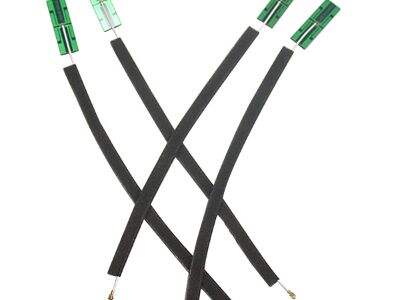Antennas are essential devices on the other hand, that allow us to transmit and receive data without the need for wires. As we can see, there are several types of antennas and each antenna is unique in its own. This will help differentiate some differences in antennas, particularly with directional antennas.
How do Directional Antennas Work?
Directional antennas are designed to emit the signal in one direction. It allows them to be more targeted both in sending and receiving signals than omnidirectional antennas, which transmit signals in all directions. Antenna gain indicates how effective your antenna is to transmit and receive signals in that single direction. We have to consider about the gain of an antenna while selecting it.
Antenna Gain in Relation to Frequency and Design
Different frequencies have impact on antenna performances. Certain antenna types favor certain frequency ranges. However, a Yagi antenna is best for high-frequency signals, and a dipole antenna is best for lower frequencies. The antenna itself makes a difference, too. Gain is directly proportional to antenna size; larger antennas have higher gain.
Yagi Vs Dipole Antennas – The Comparison
Direction antennas: Yagi and dipole. Yagi antennas contain a lot of components such as a driven element, a reflector, and director elements. They are characterized as being strong. Yagi antennas have a higher gain than dipoles, which are simpler antennas that have only two parts. Just try to consider what you use it for and how often you will use one when you pick.
Impact of Size and Shape on Antenna Gain
The effectiveness of an antenna can vary based on its size and shape. In general, larger antennas are able to capture more signals and send them out more effectively. The shape things take — whether, say, they form a straight line or a loop — can also matter. For instance, a loop antenna might perform better than a straight wire antenna of the same length.
How to Choose an Antenna That Works for You
Choosing an antenna involves various considerations. You have to think about what frequency range, how much gain is needed, how large is it going to be, and how well does it need to work. Ensure to choose an antenna suitable for the desired frequency and physical appearance. And consider where you plan to use the antenna, indoors or outdoors, since that can impact performance as well.
To sum up, it is essential to understand the gain and things related to various kinds of antennas, such as directional antennas. By educating yourself on such topics, and considering them when you select an antenna, you can ensure that you get the most optimal signal for your needs when using wireless technology.

 EN
EN
 ES
ES
 PT
PT
 NL
NL
 AR
AR
 HR
HR
 CS
CS
 DA
DA
 FI
FI
 FR
FR
 DE
DE
 EL
EL
 IT
IT
 JA
JA
 KO
KO
 NO
NO
 PL
PL
 RO
RO
 RU
RU
 SV
SV
 TL
TL
 IW
IW
 ID
ID
 LT
LT
 SR
SR
 SK
SK
 SL
SL
 UK
UK
 VI
VI
 ET
ET
 HU
HU
 MT
MT
 TH
TH
 TR
TR
 FA
FA
 GA
GA
 BE
BE
 IS
IS
 LB
LB
 BG
BG

/images/share.png)

